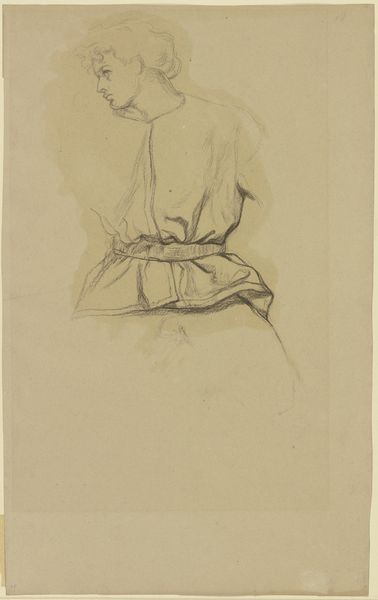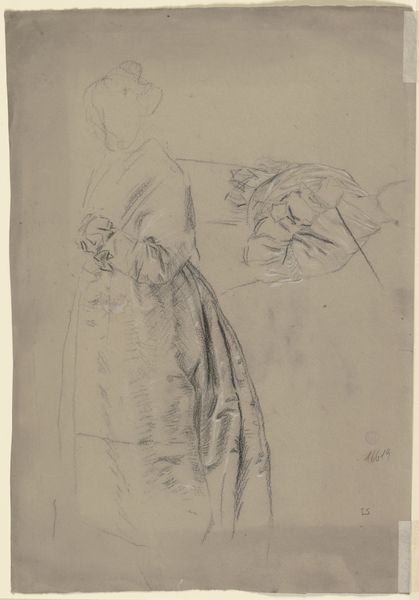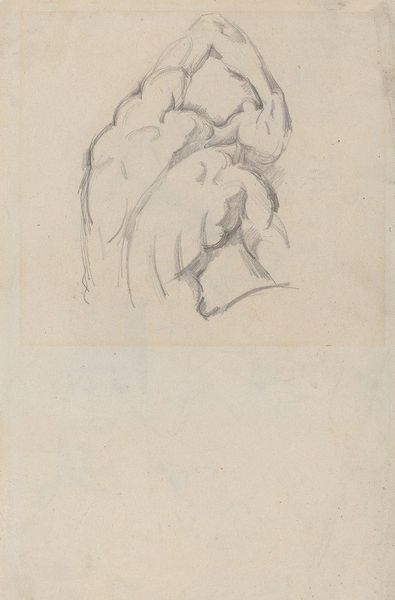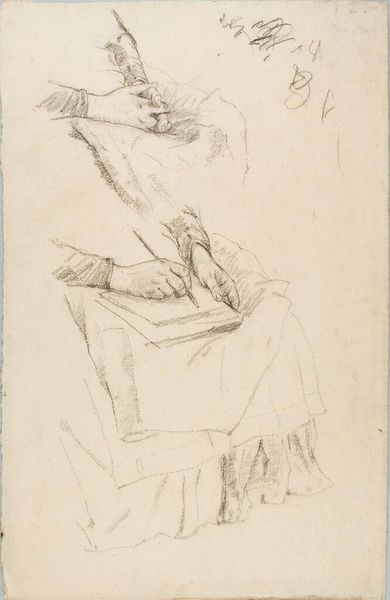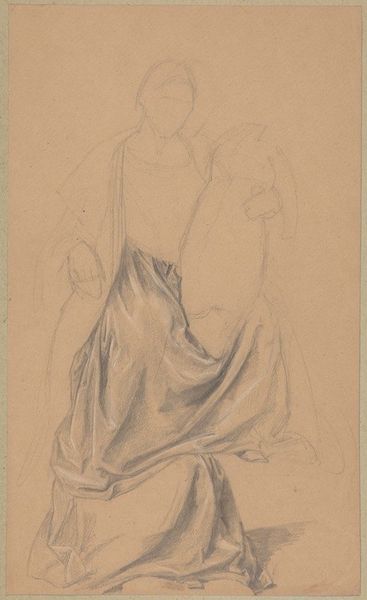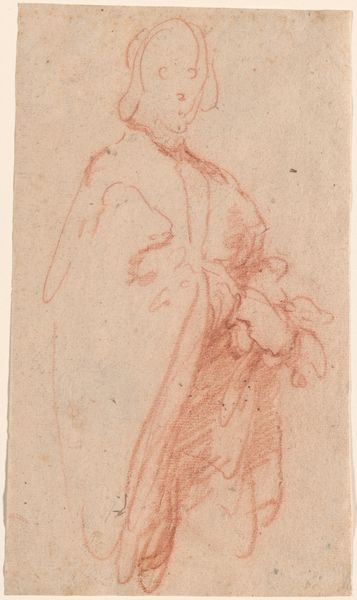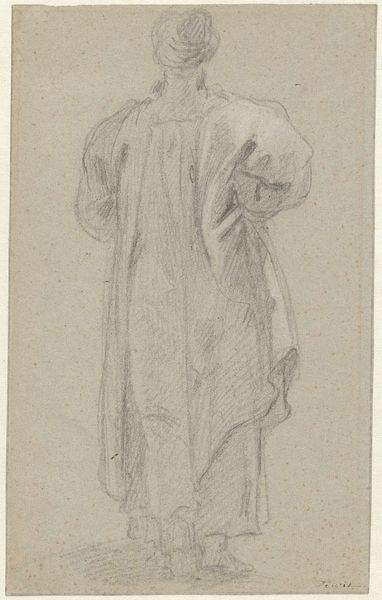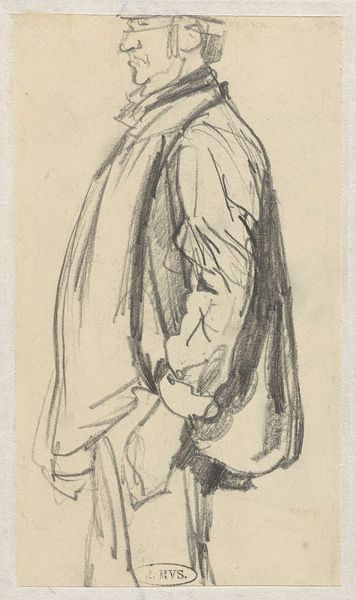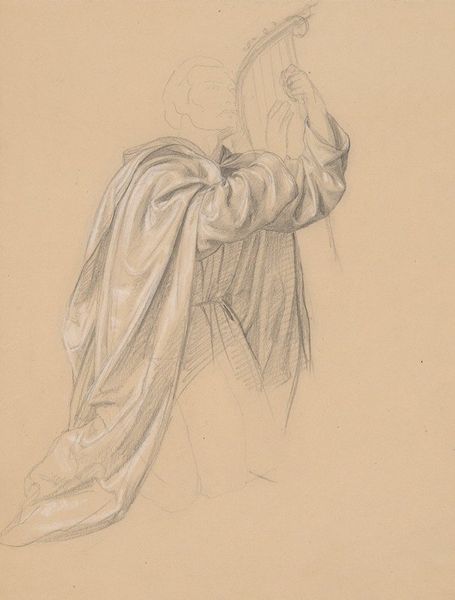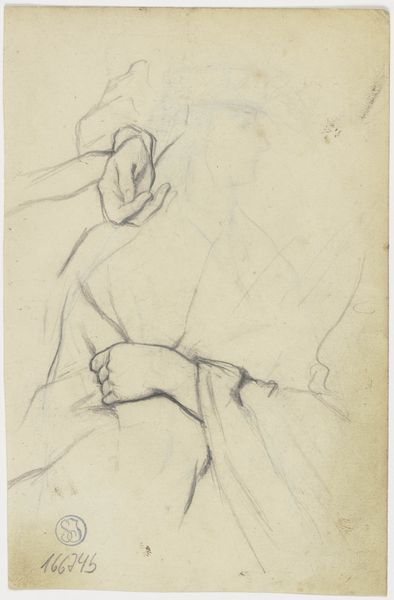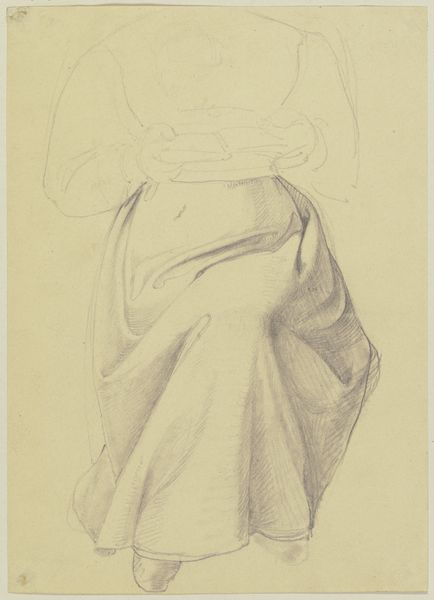
drawing, paper, pencil
#
portrait
#
drawing
#
pencil sketch
#
figuration
#
paper
#
pencil
#
sketchbook drawing
#
pencil work
Dimensions: height 295 mm, width 201 mm
Copyright: Rijks Museum: Open Domain
Curator: Here we have "Sketch of a Woman with Child in Arms" by Philip Sadée, estimated to be from somewhere between 1847 and 1904. It's a delicate pencil drawing on paper. Editor: My first thought? Quiet. And… fragile. You can almost feel the tenderness in those simple pencil lines. There is a sense of immediacy to the work; perhaps drawn from life? Curator: Absolutely. Sadée was fascinated by the lives of ordinary people, often depicting fishermen and farmers. Think of all the pencils he must have gone through, capturing fleeting moments like this. What paper was available to him? Who made it? How did he sharpen his pencils? What did his pencil shavings look like? Editor: Ah, the poetry of pencil shavings! But speaking of capturing moments, there's such a raw honesty here. You see the woman’s weariness in the slump of her shoulders, but also this immense protectiveness in the way she holds the child. Curator: Precisely. I think the rawness you mention comes from it being a sketch, unfinished perhaps. You get this incredible sense of intimacy, as if you're glimpsing a very private moment. I wonder about the shawl too. You almost feel its weight by the shading he’s achieved. Who wove the shawl? Did she have help? Did she dye the fabric herself? I feel like knowing about this shawl unlocks a part of her experience that might remain hidden otherwise. Editor: Definitely a hardworking textile piece! You know, thinking about materials... it’s just pencil and paper, so accessible, yet capable of conveying such deep emotion. I can imagine him, perhaps, roughing this out quickly on whatever he had to hand, using the most basic of tools to reflect everyday rural lives. Curator: The directness of pencil to paper—it really strips everything down to its essence. Sadée doesn't hide anything; you see every stroke, every hesitation. Editor: Well, after digging into the materials and social context, it brings us back to that central image of a mother holding her child. Universal, timeless. I think Sadée has immortalized not just a woman and a child, but also this deeply human connection with profound tenderness. Curator: Indeed, and seeing this sketch amidst all the larger, more bombastic works, is so intimate, like a whispered secret held close to the chest. I think I felt more with those fleeting lines than from many an hour contemplating many completed canvases.
Comments
No comments
Be the first to comment and join the conversation on the ultimate creative platform.
